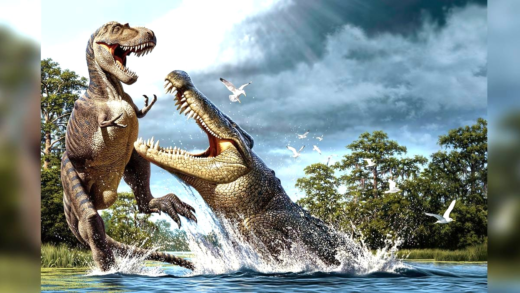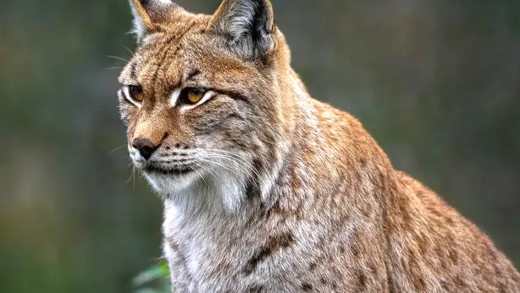Bowhead whales are remarkable Arctic survivors, known for their longevity, unique adaptations, and ecological importance. They contribute significantly to marine ecosystems by regulating plankton populations and serving as prey for apex predators. However, they face challenges from climate change, human activities, and habitat loss. Their distinct physical features, such as the bow-shaped skull and thick blubber, set them apart from other whale species.
Bowhead Whale Overview: What Makes Them Unique?
Bowhead whale is a remarkable species that showcases the wonders of marine life. These magnificent creatures are characterized by their robust bodies, large heads, and distinctive bow-shaped skulls. They can grow up to 66 feet in length and weigh as much as 100 tons. One unique feature of bowhead whales is their thick blubber layer, which protects them from the frigid Arctic waters. Their baleen plates allow them to filter feed on small organisms like plankton, making them efficient foragers.
Additionally, bowhead whales have an impressive lifespan, often living over 200 years. This longevity makes them one of the longest-living mammals on Earth. Their history is intertwined with human cultures, especially among Arctic indigenous communities who have relied on them for sustenance and cultural practices. Understanding bowhead whales is crucial not just for biodiversity but also for maintaining the balance of their ecosystems.
Bowhead Whale Habitat: Where Do They Call Home?
Bowhead whales inhabit the cold waters of the Arctic and sub-Arctic regions. Their primary habitats include the Bering Sea, the Chukchi Sea, and the Beaufort Sea. These areas provide the icy conditions they thrive in, particularly during the summer months when sea ice melts, exposing rich feeding grounds. The bowhead whale habitat is critical as it supports the unique marine life in these regions.
Bowhead whales are migratory, often traveling hundreds of miles in search of food and suitable breeding grounds. During winter, they can be found in more sheltered areas with less ice cover, which offers protection from predators and harsh weather. The specific conditions of their habitat, such as ice thickness and water temperature, directly influence their behavior and distribution.
Bowhead Whale Lifespan: How Long Do They Live and Why?
The bowhead whale is renowned for its extraordinary lifespan, with some individuals reaching over 200 years. This remarkable longevity is attributed to various factors, including their slow reproductive rate, which allows them to mature over many years. Bowhead whales typically reach sexual maturity at around 20 years old, and females give birth every 3 to 4 years.
Research suggests that bowhead whales possess unique adaptations that contribute to their extended lifespans. For example, their slow metabolism and the absence of natural predators, aside from humans, help them avoid many of the dangers other marine mammals face. Additionally, studies have shown that bowhead whales can recover from injuries that would be fatal to other species, further enhancing their survival prospects. This longevity not only highlights their resilience but also emphasizes their role as vital indicators of Arctic ecosystem health.
Adaptations for Ice: How Bowhead Whales Thrive in Cold Waters
Bowhead whales are perfectly adapted to their icy habitats. Their thick layer of blubber, measuring up to 18 inches, provides essential insulation against the freezing Arctic temperatures. This blubber not only keeps them warm but also serves as an energy reserve during times of food scarcity. Additionally, bowhead whales have a unique ability to modify their behaviors according to ice conditions, allowing them to navigate through thick ice and find open water.
Their large, bow-shaped skull is another remarkable adaptation. It helps them break through ice when they need to surface for air. This physical trait is especially useful in areas with extensive sea ice. Furthermore, bowhead whales can adjust their feeding techniques based on ice presence, switching from filter feeding to more active foraging methods as needed.
- Thick blubber: Provides insulation and energy reserves.
- Bow-shaped skull: Facilitates ice breaking for surfacing.
- Behavioral adaptability: Changes feeding and migration patterns based on ice conditions.
Defense Mechanisms: How They Protect Themselves from Killer Whales
Bowhead whales have developed several effective defense mechanisms against their primary predators, including killer whales. One significant strategy is their sheer size; adult bowhead whales can weigh up to 100 tons, making them formidable opponents. When threatened, they often utilize their speed and agility in the water to escape.
Moreover, bowhead whales are known to engage in group behaviors. By swimming in pods, they can protect one another and confuse predators. They also exhibit a behavior known as “spyhopping,” where they raise their heads above water to survey their surroundings, helping them detect threats early.
- Utilizing size and weight for intimidation.
- Swimming in pods for collective protection.
- Engaging in spyhopping to monitor for threats.
Cultural Significance: Bowhead Whales in Human History
Bowhead whales hold a significant place in the history and culture of Arctic indigenous peoples. For centuries, these whales have been a vital resource, providing food, materials for tools, and cultural identity. The hunting of bowhead whales, known as whaling, is steeped in tradition and is often accompanied by rituals that honor the animal and express gratitude.
Moreover, bowhead whales have inspired art, stories, and legends within these communities, symbolizing strength and resilience. Their presence in the Arctic ecosystem is not only crucial for the environment but also for the cultural heritage of the people who depend on them.
- Source of sustenance: Vital food source for indigenous communities.
- Materials for tools: Bones and baleen used in crafting.
- Cultural identity: Central to traditions and stories.
Ecosystem Role: What Do Bowhead Whales Contribute to the Arctic?
Bowhead whales play a vital role in the Arctic ecosystem. As large filter feeders, they help maintain the balance of marine life by consuming vast amounts of zooplankton. This feeding behavior not only regulates plankton populations but also supports the food chain, benefiting various marine species, from small fish to larger predators. Their presence indicates a healthy ecosystem and contributes to nutrient cycling within their habitat.
Furthermore, bowhead whales serve as prey for apex predators, including orcas. This predatory relationship is crucial for maintaining the balance of the Arctic marine food web. Additionally, their migration patterns can influence the distribution of other marine species, showcasing their integral role in the ecological dynamics of the Arctic.
- Filter feeding: Regulates zooplankton populations.
- Prey for apex predators: Contributes to marine food web stability.
- Migratory influence: Affects the distribution of other species.
Current Threats: What Challenges Do Bowhead Whales Face Today?
Bowhead whales face several significant threats that jeopardize their survival. Climate change is the most pressing issue, causing the Arctic ice to melt and altering their habitat. This loss of ice not only affects their feeding grounds but also increases competition for food and exposes them to more predators.
Additionally, human activities pose various risks. Commercial shipping routes are expanding in the Arctic, leading to potential collisions and increased noise pollution, which can disrupt their communication and navigation. Oil and gas exploration also threaten bowhead whales by introducing toxic substances into their environment and risking oil spills that can devastate marine ecosystems.
- Climate change: Melting ice alters habitat.
- Commercial shipping: Increases collision risks.
- Oil and gas exploration: Poses pollution threats.
Unique Features: What Sets Bowhead Whales Apart from Other Species?
Bowhead whales possess several unique features that distinguish them from other whale species. Their iconic bow-shaped skull is not only a striking physical characteristic but also an adaptation that aids in breaking through ice. This feature is essential for their survival in the harsh Arctic environment.
Additionally, their thick blubber layer, which can reach up to 18 inches, is another distinguishing trait. This blubber provides insulation and serves as an energy reserve, allowing them to thrive in freezing waters. Bowhead whales also exhibit remarkable longevity, often living over 200 years, making them one of the longest-living mammals on the planet.
- Bow-shaped skull: Facilitates ice breaking.
- Thick blubber: Offers insulation and energy storage.
- Longevity: Over 200 years, unique among mammals.





Comments are closed.